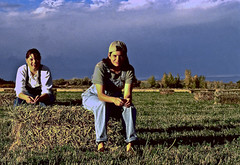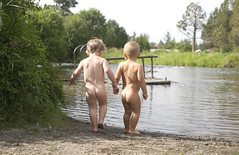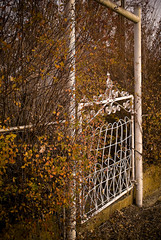There is a meat market near by that sells locally grown beef raised by farmers and ranchers who care about the quality of the goods they send to market. Locally grown sweet corn was the markets here in September and consumed quickly by others who share my values of eating local.
While on a trip recently I purchased a “snack food” at a local quick market while filling my gas tank. The guy next to me at the cashier, a police officer in town, noticed and asked if I intended to pay for the snack because in all his years shopping in this store he’d never seen anyone pay for such a snack. I explained I would pay for the snack and had no intention of eating the snack. I had a photo in mind.
The ingredients of the snack food includes: sugar, corn syrup, water, enriched and bleached flour, coconut, partially hydrogenated vegetable and or animal shortening, high fructose corn syrup, pork gelatin and lots of other stuff like, sodium steardyl, yellow 5 lake blue. The snack food package lists calories as 340.
The apple and avocado did not come in a package. Their calories are 81 and 150. They each have lots of ingredients like fiber, Omega-3 fatty acids, natural sugars and vitamins that are produced in soil, water and sunshine. Their colors happen naturally and are not added in an industrial snack food facility or through the wonders of a chemistry lab.
Given the health concerns about the American diet, the epidemic of obesity, the number of children diagnosed with Type 2 diabetes, is there any reason to buy food that is not real and simple and when possible grown and produced locally?
Michael Pollan recently wrote that he defines food as - something our grandmothers would recognize, has five or fewer ingredients, does not contain ingredients we cannot pronounce, that makes no health claims on packaging. To read more of his work go here.
Our state and federal governments are making efforts to insure the safety of our food. It is, I think, worth noting that regulations do not always work, inspecting food factories and companies with teams of lawyers will always be a challenge. Integrity and authenticity cannot be regulated. And we can buy "junk food" nearly everywhere but cannot buy home made bread, jams and jellies unless made in an industrial and government approved facility.
I for one would rather buy simple, locally grown and home made food whenever possible and know that the farmer who grew the food or home producer who made the food would shake my hand as a sign of honor and authenticity. I trust someone who I can look in the eye while shaking his or her hand.
While on a trip recently I purchased a “snack food” at a local quick market while filling my gas tank. The guy next to me at the cashier, a police officer in town, noticed and asked if I intended to pay for the snack because in all his years shopping in this store he’d never seen anyone pay for such a snack. I explained I would pay for the snack and had no intention of eating the snack. I had a photo in mind.
The ingredients of the snack food includes: sugar, corn syrup, water, enriched and bleached flour, coconut, partially hydrogenated vegetable and or animal shortening, high fructose corn syrup, pork gelatin and lots of other stuff like, sodium steardyl, yellow 5 lake blue. The snack food package lists calories as 340.
The apple and avocado did not come in a package. Their calories are 81 and 150. They each have lots of ingredients like fiber, Omega-3 fatty acids, natural sugars and vitamins that are produced in soil, water and sunshine. Their colors happen naturally and are not added in an industrial snack food facility or through the wonders of a chemistry lab.
Given the health concerns about the American diet, the epidemic of obesity, the number of children diagnosed with Type 2 diabetes, is there any reason to buy food that is not real and simple and when possible grown and produced locally?
Michael Pollan recently wrote that he defines food as - something our grandmothers would recognize, has five or fewer ingredients, does not contain ingredients we cannot pronounce, that makes no health claims on packaging. To read more of his work go here.
Our state and federal governments are making efforts to insure the safety of our food. It is, I think, worth noting that regulations do not always work, inspecting food factories and companies with teams of lawyers will always be a challenge. Integrity and authenticity cannot be regulated. And we can buy "junk food" nearly everywhere but cannot buy home made bread, jams and jellies unless made in an industrial and government approved facility.
I for one would rather buy simple, locally grown and home made food whenever possible and know that the farmer who grew the food or home producer who made the food would shake my hand as a sign of honor and authenticity. I trust someone who I can look in the eye while shaking his or her hand.













